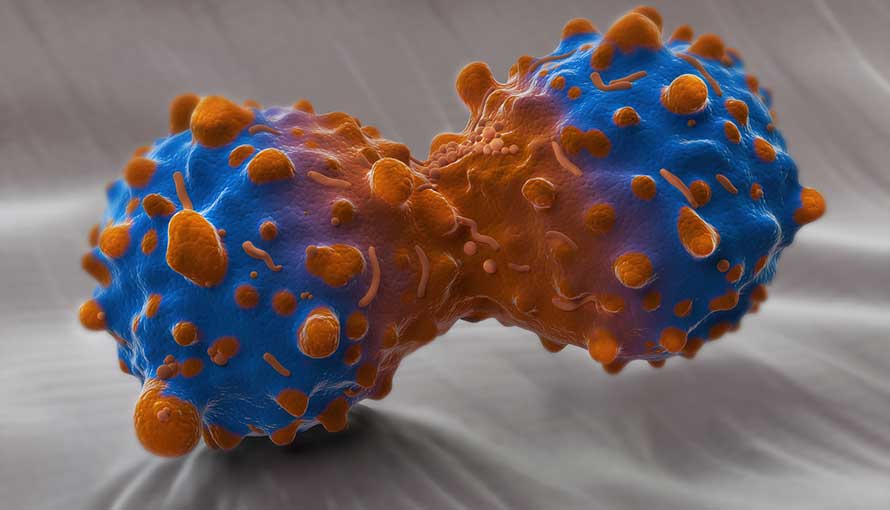How Does Lung Cancer Start

A lung cancer diagnosis can be frightening and unsettling. It can also lead to many questions, such as what exactly is lung cancer, why did it develop and how did it start?
Every cancer starts with DNA changes
Like all other types of cancer, lung cancer begins with a series of mutations in the DNA of previously healthy cells. Every cell in the body has DNA, which contains specific instructions that control cellular development, reproduction and survival, keeping the number of cells in check at all times. The DNA changes that lead to cancer cause those instructions to go awry. As a result, the cells grow and divide very rapidly and survive longer than they should. The abnormal lung cells do not carry out the functions of normal cells or develop into healthy lung tissue. Instead, they build up, bind together and form cancerous tumors in the lungs.
What triggers the DNA changes that cause lung cancer?
The majority of lung cancer cases can be traced to cigarette smoking. Specifically, the DNA changes that lead to the development of lung cancer occur after harmful chemicals—such as those contained in tobacco smoke—are breathed in. The inhaled carcinogens then damage cells in the respiratory system. Although the damage begins almost immediately, the body may be able to repair it, at least initially. However, with repeated exposures to harmful chemicals over time, the damage may worsen and become irreversible.
Less often, lung cancer develops in people who have never smoked or been exposed to secondhand smoke. As such, lung cancer sometimes starts for no known reason.
Cancerous lung tumors can spread
As lung cancer progresses, some of the cancerous cells may break away from the original tumor and invade healthy tissues, such as nearby lymph nodes. If cancerous cells enter the lymphatic system or bloodstream, they can circulate throughout the body and spread (metastasize) to distant tissues and organs, such as the brain, liver, bones and adrenal glands.
Lung cancer that spreads is still called lung cancer
Lung cancer can originate anywhere in the respiratory system, which includes the lungs, bronchi, trachea, larynx, pharynx and nasal cavity. Cancer that starts in the respiratory system and spreads to another tissue or organ is still classified as lung cancer, regardless of the location of the metastatic tumor. More specifically, the original lung tumor is referred to as primary lung cancer, and the metastatic tumor is referred to as secondary lung cancer.
More is being learned every day
Researchers in the general medical community still have much to learn about how and why lung cancer starts. Through extensive research and a robust clinical trials program, the scientists and clinicians in the Thoracic Oncology Program at Moffitt Cancer Center are continually making progress in expanding the knowledge base about this common malignancy. Taking a unique bench-to-bedside approach, we strive to quickly translate our discoveries into meaningful benefits for our patients. In recognition of our groundbreaking efforts, the National Cancer Institute has designated Moffitt a Lung Cancer Center of Excellence.
If you have questions and would like to connect with a specialist in the Thoracic Oncology Program at Moffitt Cancer Center, you can request an appointment by calling 1-888-663-3488 or completing our new patient registration form online. As our patient, you are a top priority of a cancer center that delivers nationally-ranked care in new and transformative ways.
FAQs
- Signs and Symptoms
- Diagnosis
- Treatment
- FAQs
- Lung Cancer Early Detection Center
- Lung Cancer Screening and Surveillance Program
- Lung Nodules
- Lung Surveillance Clinic
- Metastatic Lung Cancer
- Recurrence
- Survival Rate
- Your Lung Cancer Specialists
- Lung and Thoracic Tumor Education (LATTE)
- Thoracic Clinic Updates
- Insurance & Financial Information
